
7 of the Most Charming Towns in Iowa
Iowa was the 29th state to join the Union back in 1846. It has an area of 56,273 mi2, bordered by Minnesota, the Mississippi River, Nebraska, Illinois, Missouri, Wisconsin, and South Dakota. Iowa is a state with a rich cultural heritage, with several Native American tribes calling the region home for centuries before European arrival. These tribes included groups like the Sioux and Loway, who used the wide-open territory mainly for hunting. European settlers came to the region, which would later become Iowa, in 1833, establishing the very first permanent European settlement.
Iowa’s settlers mainly came from Holland and Germany, with towns like Pella honoring their heritage with tulip festivals and cultural monuments. Pella even has a festival every year celebrating the many tulips grown in the state. Iowa is a beautiful state that provides visitors with a unique and authentic look into America’s heartland through its many charming towns.
Pella

Pella is a gorgeous town located approximately an hour southeast of Des Moines and just a few minutes from Lake Red Rock. It gets its name from the hideout known as the Pella of Decapolis, where the Jewish fighters sought refuge during the Roman-Jewish War. This is because the town was a safe location for refugees fleeing Holland for religious persecution in the mid-1800s. The community’s early history dates back to the arrival of the Scholte family in 1847. Accordingly, Reverend Hendrik Pieter Scholte, his wife Maria, and their children came to Pella in late April 1847 to a near-empty area of Iowa where only a small sign with the word “Pella” written on it was present.
Today, Pella is a lively community of over 10,000 residents, many of whom are descendants of the original Danish settlers. Visitors will probably notice the town’s vibrant Dutch heritage right away, with tulips and windmills scattered throughout the community. By far, the most popular is the Vermeer Windmill, which was originally built in Holland but was disassembled and shipped across the sea to Iowa and rebuilt in 2002. Guests can get a tour of this site for just $20.00. Tourists will also enjoy Tulip Time, a beautiful display of some 300,000 different tulips and a symbol of the town’s culture and unity.
Not far from the Vermeer Windmill are several historically significant homes that are well-maintained and a lot of fun to explore. The Wyatt Earp House, Scholte House, and Maria’s Tea Room are all important landmarks of the town and are well worth visiting. Anyone hoping to spend a whole weekend, which is certainly recommended, should plan to stay at the Amsterdam Hotel for first-class service in a quiet and welcoming location.
Mount Vernon
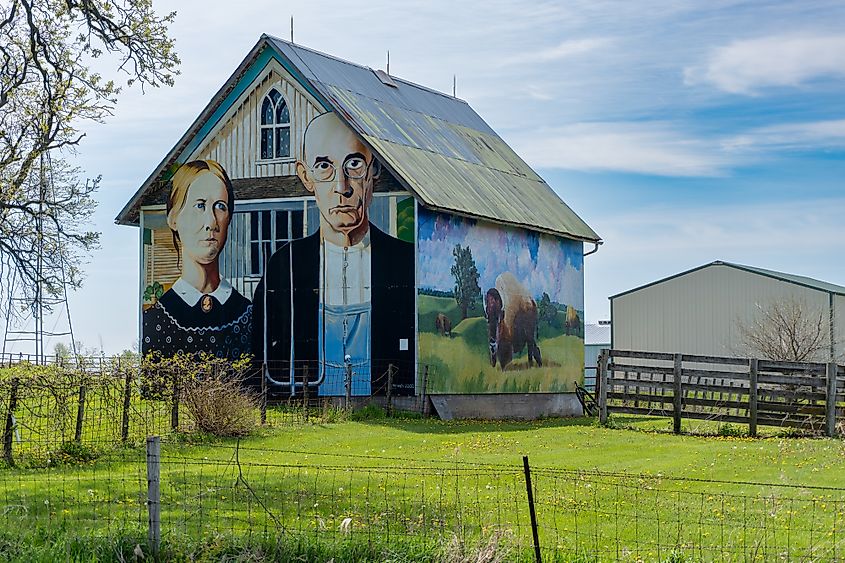
About two hours northeast of Pella is Mount Vernon, a quiet community located about 20 minutes east of Cedar Rapids. Settlers from Europe arrived in the area, which would later become the town of Mount Vernon, around 1837. Just a year later, the town began to grow, and soon, merchants and shops began to establish themselves in the community. Over the years, the community went by various names, including Pinhooks and Hilltop, but eventually, they settled on Mount Vernon.
Mount Vernon is a unique part of Iowa’s culture and history, with the Lincoln Highway passing through this small town. The Lincoln Highway was a landmark creation in US history, being the first highway to connect the east to the west continually. Before its construction, the only way to travel across the 14 states the Lincoln Highway ran through was to board a train. But that’s not the only historical part of this community. Cornell College, established in 1853 as the Iowa Conference Male and Female Seminary, is one of two colleges in the United States to have its whole campus listed on the National Register of Historic Places.
The Lincoln Wine Bar opened in 2000 and is located in one of Mount Vernon’s historic buildings. It is a favorite spot to sit down, enjoy some fresh pizza, and mingle with locals. It is the ideal choice for a meal for anyone looking for wholesome local foods served in one of the community’s historic sites. The walking bridge, also known as the 10th Avenue Bridge, over the railroad is a nice place to take in the area's natural beauty and snap a few photos. The bridge is another historical locale in town, having once served as a pony bridge over the railroad, it now stands as a well-preserved pedestrian bridge.
Amana Colonies
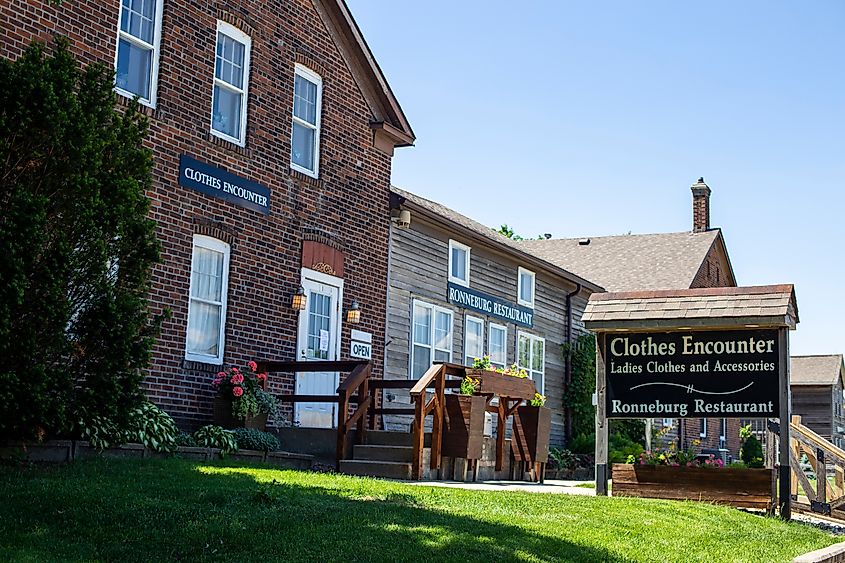
The Amana Colonies are a group of seven historic villages clustered together, located about 35 minutes west of Mount Vernon. The history of this beautiful location dates back to 1714 when the people who would be the founders of the community in the US were still small villages in Germany. They were known as the Community of True Inspiration, which set them apart from the more rigid and ritualistic mainstream churches in Germany at the time, leading to persecution. Therefore, in 1843, the people, led by Christian Metz, arrived in New York only to relocate to Iowa in 1855 to obtain more land.
That is how the seven pristine villages came to be in the heart of Iowa. However, the communal, shared way of life was given up around the time of the Great Depression, allowing community members to pursue their own well-being, but this didn’t lead to the end of the community. The Amana Church and the Amana Society, Inc are still active today, shaping the town as a fully American and spiritual location. As a recognized historical location, there are lots of events and locations that showcase and celebrate the community’s past. This includes the High Amana General Store, built in 1857, and the Amana Furniture and Clock Shop.
Both of these locations serve to give guests an authentic look into how the town once operated. Events in town often revolve around the celebration of the shifting seasons, including Winterfest, Maifest, and Oktoberfest. These events are usually held every year and include excellent food, 5k runs, and a welcoming communal atmosphere. Those looking to trek in nature and see the authentic beauty of town should take a hike down the 3.1-mile-long Amana Colonies Trails. Anyone planning an event should consider booking the restored century-old barn, Festhalle. Lastly, the Ox Yoke Inn is the place to be for nourishing food.
McGregor
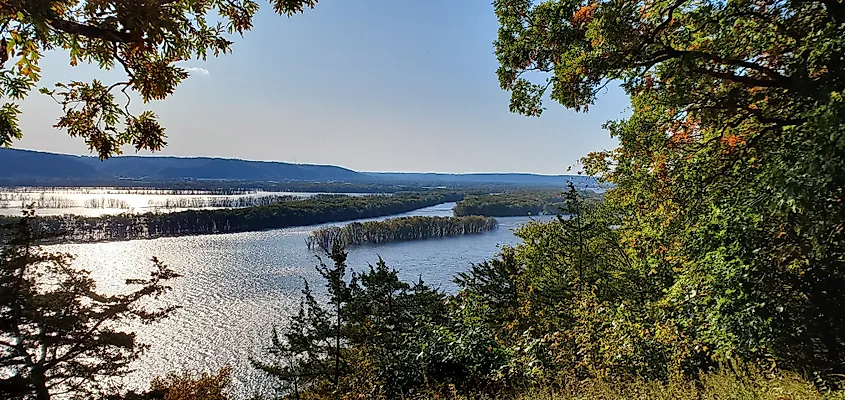
Traveling over two hours northeast of the Amana Colonies is the charming little town of McGregor. McGregor sits right along the Mississippi River and shares a border with the neighboring state of Wisconsin. Before the arrival of European settlers, the lands where McGregor would one day stand were the hunting ground for four Native American Tribes, including the Sioux, Sauk, Winnebago, and Fox. Later, Alexander McGregor, a man of Scottish ancestry descended from Rob Roy McGregor, traveled to the region and established a shipping company at McGregor Landing, which later became the town of McGregor.
This community grew rather quickly throughout the 1800s thanks to its reputation as the largest shipping hub in the region. By the 1870s, the town’s population had grown to an impressive 5,500. Today, it stands as a memorial to its prosperous past, with a nationally recognized historic downtown district and an amazing tourist vacation spot. The downtown and other areas have several historic homes and structures worth visiting. Some of the most notable include the American House, built in 1854, which guests to town can actually visit and rent as their lodging place while in town.
Another must-see site is the Goedert Meat Market, built in 1890. It is a gorgeous Italianate-style building in excellent condition for its age. The Grumpsters Log Cabins is an ideal destination for anyone hoping to reconnect with nature and recharge their battery. People can rent their Grumpsters House, which suits 4 to 12 people and is great for folks planning a family getaway. Or, they can rent the smaller cabins and enjoy the peace and quiet. The Nauti Marina is a lovely area to rent a boat to explore the Mississippi River and grab a drink at the Big Buoys Tiki Bar.
Elk Horn
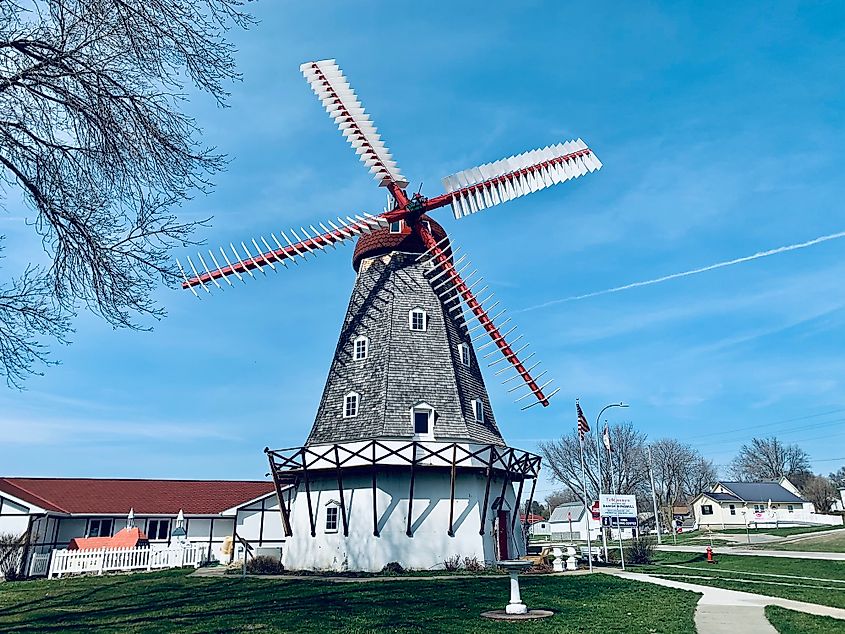
Elk Horn is an adorable small town located four and a half hours southwest of McGregor. The town traces its humble beginnings to approximately 1882 and served as the home of the Danish Lutheran Church and the local post office. The town is one of the oldest rural Danish towns, with the Danish Windmill being one of the most notable landmarks and a top tourist site. It was built in Denmark in the town of Nørre Snede in 1848. It was shipped to the US in 1976 and rebuilt in town by volunteers to commemorate their Danish history.
The Windmill is an excellent place to visit, and guests can book a tour to get a historic view of the Windmill and learn all about the town’s past. The Windmill is centrally located, too, meaning visitors will have access to historic locations, including The Museum of Danish America and the Bedstemor’s House. The museum does an excellent job of educating guests on the town’s cultural heritage, giving people a chance to take a glimpse into the early days of Danish settlement in the US.
The Bedstemor’s House was built by Jens Otto Christiansen in 1908. The home is beautiful but has a slightly sad history. It is said that Jens Otto Christiansen built the home as an engagement gift for a local lady who turned him down. It was sold in 1933 to the Salem Old People’s Home for a dollar and some other pieces of value. The good news is that it is still standing today and being preserved as a local historic landmark, so visitors and locals alike can visit and enjoy it. Folks looking to refuel after a long day exploring the community should drop by Grace on Main for an amazing dinner and dessert.
Orange City
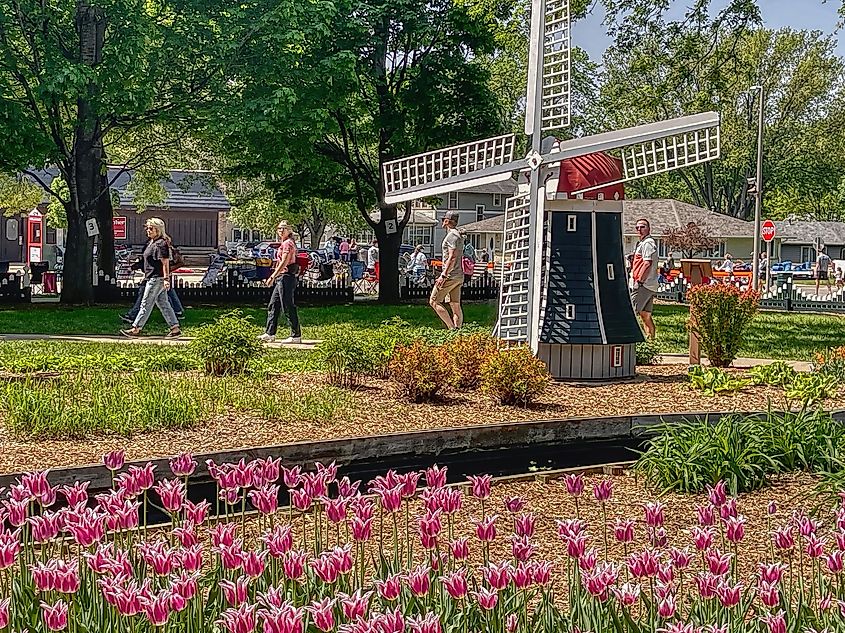
Orange City is over two hours north of Elk Horn and traces its roots back to 1870 when settlers came to the area from Holland. The settlers named the town “Orange City” after the Royal House of Orange in Europe. After their arrival, the town blossomed rather quickly, with the local schoolhouse, the Northwestern Classical Academy, serving as the centerpiece of the community. The schoolhouse was a symbol of the community’s love of learning and the value of education since they invested a lot of the town’s early funding into building the location.
Today, Northwestern College is the modern-day version of this lovely old schoolhouse. The university goes all the way back to this small schoolhouse, built in 1882, and is a well-known institute of higher learning all across the country. While in town, it is certainly worth walking the campus and seeing how far the community has come. Other notable historic locations in the town include the Sioux County Courthouse, built in 1904, and the Vogel Old Mill, built in 1967.
After a long day, it is a smart idea to drop by the Downtown Grille for a fresh bite to eat.
Spirit Lake
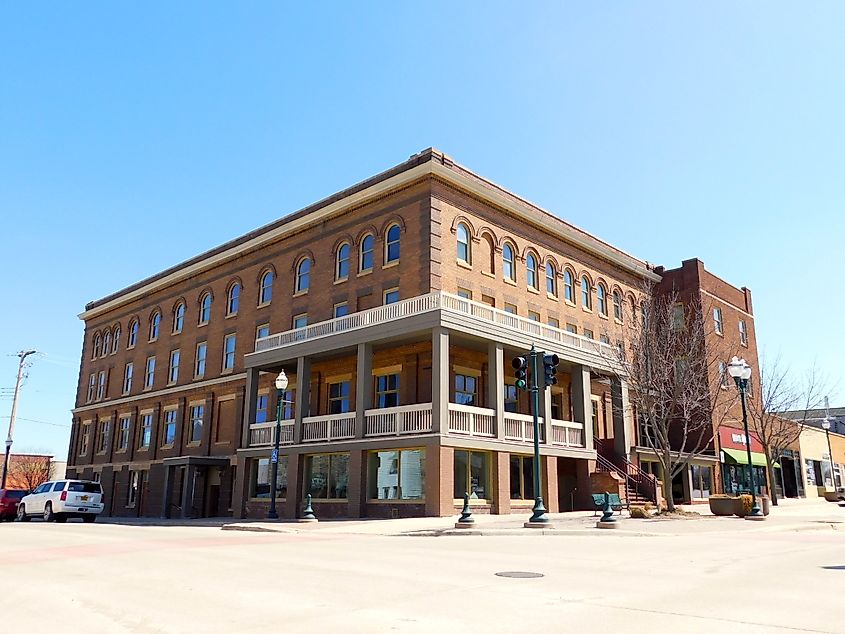
Just over an hour northeast of Orange City is the lovely small town of Spirit Lake. With just over approximately 5,000 residents, the community has a beautiful blend of rural and suburban vibes, resting right along the shores of Center Lake and near West Okoboji Lake. The town gets its name from the local Native Sioux Tribe’s name for the region, Minnewaukon, or “Lake of the Spirit.”
European settlers came to the area in 1856, but many were massacred about a year later, leading to a rescue expedition of about 100 men. This later became part of the new settlement, which was more successful. One of the early sites in town is St. Mary’s Catholic Church, located near the shores of the lake, with a history going back to 1856. There are plenty of lovely spots near the lake for walking, hiking, and enjoying nature not far from the church. Two notable parks are Memorial and Gilbert Park, both excellent for an afternoon outdoors.
Although not in town, several beautiful nature sites, such as the Jemmerson Slough Wildlife Management Area, Templar State Recreation Area, and Marble Beach State Recreation Area, are nearby. Those looking for a good bite to eat may enjoy Hibachi 88 or El Mariachi Bar and Grill. Lastly, there are excellent accommodations for those hoping to stay a few days, including the Oakwood Inn.
Iowa is a beautiful, often overlooked Midwestern state that offers visitors a unique glimpse into the heart of the United States. The region has many nature sites, with over 80 state parks and two national parks. It is also home to traditional historic sites, including the Grotto of the Redemption and even the site of the famous film location for “The Field of Dreams.” Whether tourists seek out a quiet place to recharge, a welcoming community to mingle with or explore the state’s cultural heritage with the many festivals, Iowa is the most charming destination to visit.











